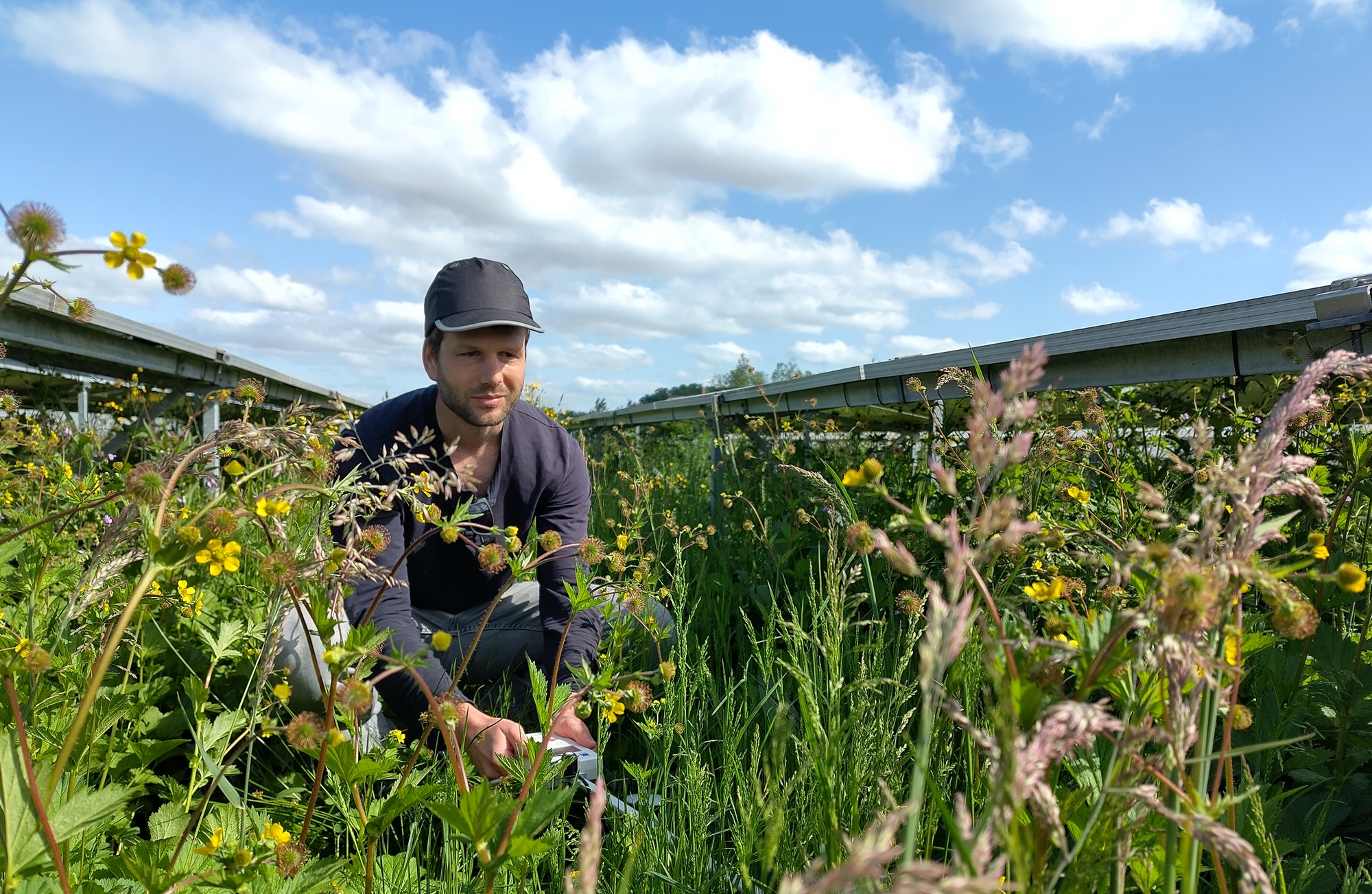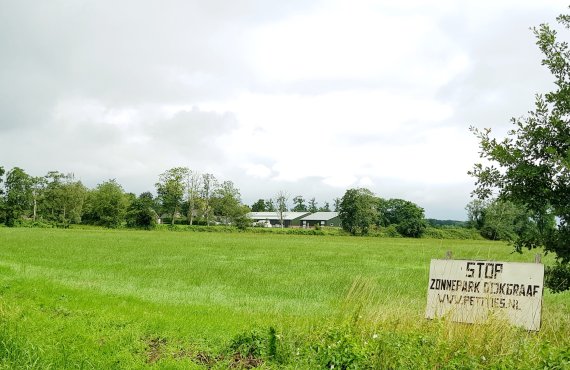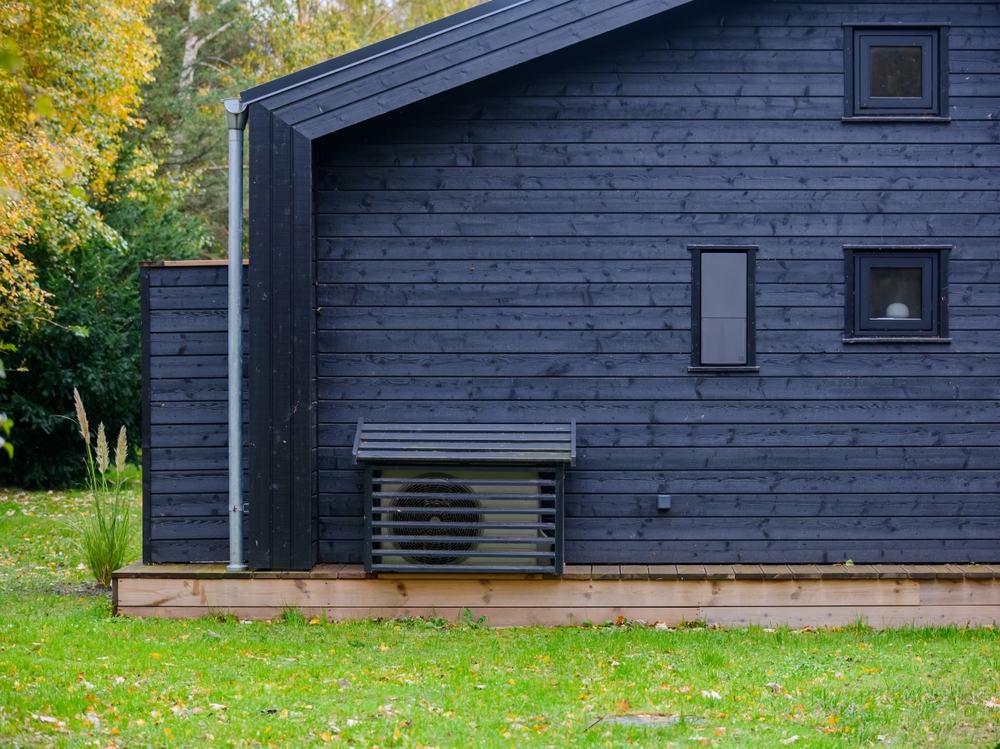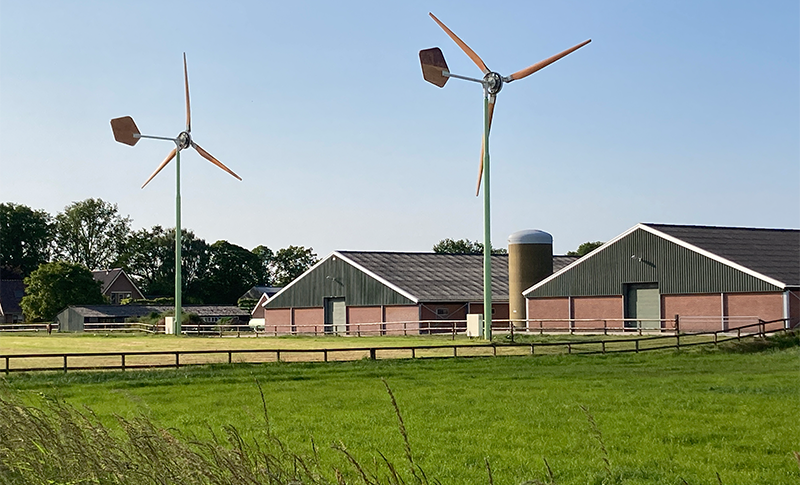Solar panels trap light, which means less light gets through to the ground below the panels. Plants then don’t grow so well, or not at all, which has a negative effect on biodiversity and soil quality. But the size of that effect depends a lot on how the panels are arranged. That is the subject of Luuk Scholten’s research.
To perform his research, Scholten has his own solar farm less than a kilometre from the campus. Behind De Born Farm, nearly 1000 solar panels in various ‘pitched roof’ setups are generating electricity. The solar farm was created in October 2023 specifically for his study, which is part of the Eco Certified Solar Parks project.
Guidelines
The project’s name says it all. ‘The aim is to draw up guidelines and requirements for solar farms to make sure they blend in with the landscape and boost biodiversity,’ explains Scholten. He is focusing on soil quality while two fellow PhD candidates are looking at biodiversity above ground.
There is a minimum value for the incident light you need to maintain proper vegetation and retain soil quality
Luuk Scholten, chairgroup Soil Biology
‘The problem with solar farms is that it’s dark under the panels and the transition from dark to light is very abrupt,’ he says, explaining his research. ‘There is a minimum value for the incident light you need to maintain proper vegetation and retain soil quality.’ To investigate this, he has arranged ‘solar roofs’ of varying sizes running from east to west, in setups designed to let through different amounts of light.

The vegetation growing beneath and between the rows of panels ranges from grass to mixtures of plants that vary in how well they grow in the shade. At first sight, there seems to be an abundance of plants growing and flowering in the park. ‘Everything grows well under a row of single panels,’ says Scholten, ‘but there is a clear deterioration in the rows with two or four panels. The shade-loving species appear to be doing well, though.’
To quantify the growth, Scholten measures the biomass. He simply cut, dries and weighs the plants. He also measures differences in the exchange of CO₂ between the soil and the atmosphere, both under and next to the panels, and monitors things such as the soil temperature and moisture content. In addition to the trial in this park, research is also being carried out at existing solar farms elsewhere in the country.
Applicable
Scholten’s solar farm has a pitched-roof setup, but numerous other setups are possible. Even so, he believes the results from this specific setup will be more broadly applicable. ‘The idea behind this project is to look at how much sunlight is needed. If you know that, you can design other setups that deliver the same amount of light under the panels.’

 Foto Roelof Kleis
Foto Roelof Kleis 

